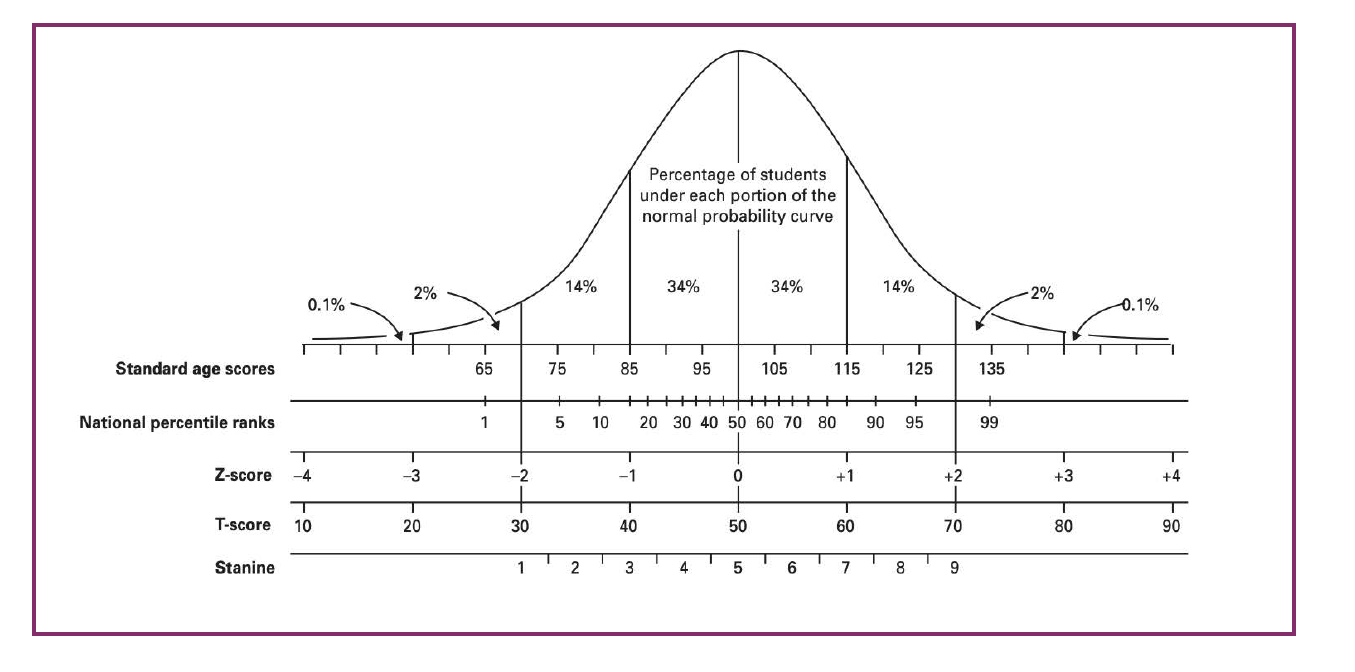Quick data guide
Standard Age Score
LASS 8–11 results on each subtest are given as Standard Age Scores (SAS). Standard Age Scores, like IQ, are usually expressed with a mean of 100 and a standard deviation of 15. These scores reflect the student’s performance compared to those of the norm referenced group, which is based on the student’s age, in three-month age bands from 8:0–8:2 up to 11:9–11:11.
Confidence bands
Any test score is only an estimate of the student’s ability, based on their performance on a particular day. Performance on any test can be affected by several factors. The LASS 8–11 report provides confidence bands, which give an indication of the range within which a student’s score lies. The dot on each subtest row within the table represents the student’s SAS and the horizontal line represents the 90% confidence band. The shaded area shows the average score range. 90% confidence bands are a very high-level estimate; if the test were taken again, we would expect the score to fall within this range 90% of the time.
Stanine
This places the student’s score on a scale of 1 (low) to 9 (high) and offers a broad overview of performance.
National Percentile Rank
This related to the SAS score and shows the percentage of students obtaining a certain score or below. An NPR of 50 is average since 50% of students obtain an SAS of 50 or below. An NPR of 5 indicates that a student’s score is within the lowest 5% of the nationally representative sample and an NPR of 95 means that a student’s score is within the highest 5% of the national sample.
T-score
T-scores have a mean of 50 and a Standard Deviation (SD) of 10, so a T-score of 40 is one SD below the mean and T-score of 60 is one SD above the mean. 68% of T-scores would fall within the 40-60 range, so a T-score below 40 would be considered below average and a T-score above 60 would be considered above average.
Z-score
Z-scores show us the student’s score in standard deviation units, with a mean of 0 and an SD of 1. So, a Z-score of -1.0 would indicate that the student’s score is one SD below the mean and a Z-score of +1.0 would indicate that the student’s score is one SD above the mean.
The relationship between these scores is shown in the figure below:


